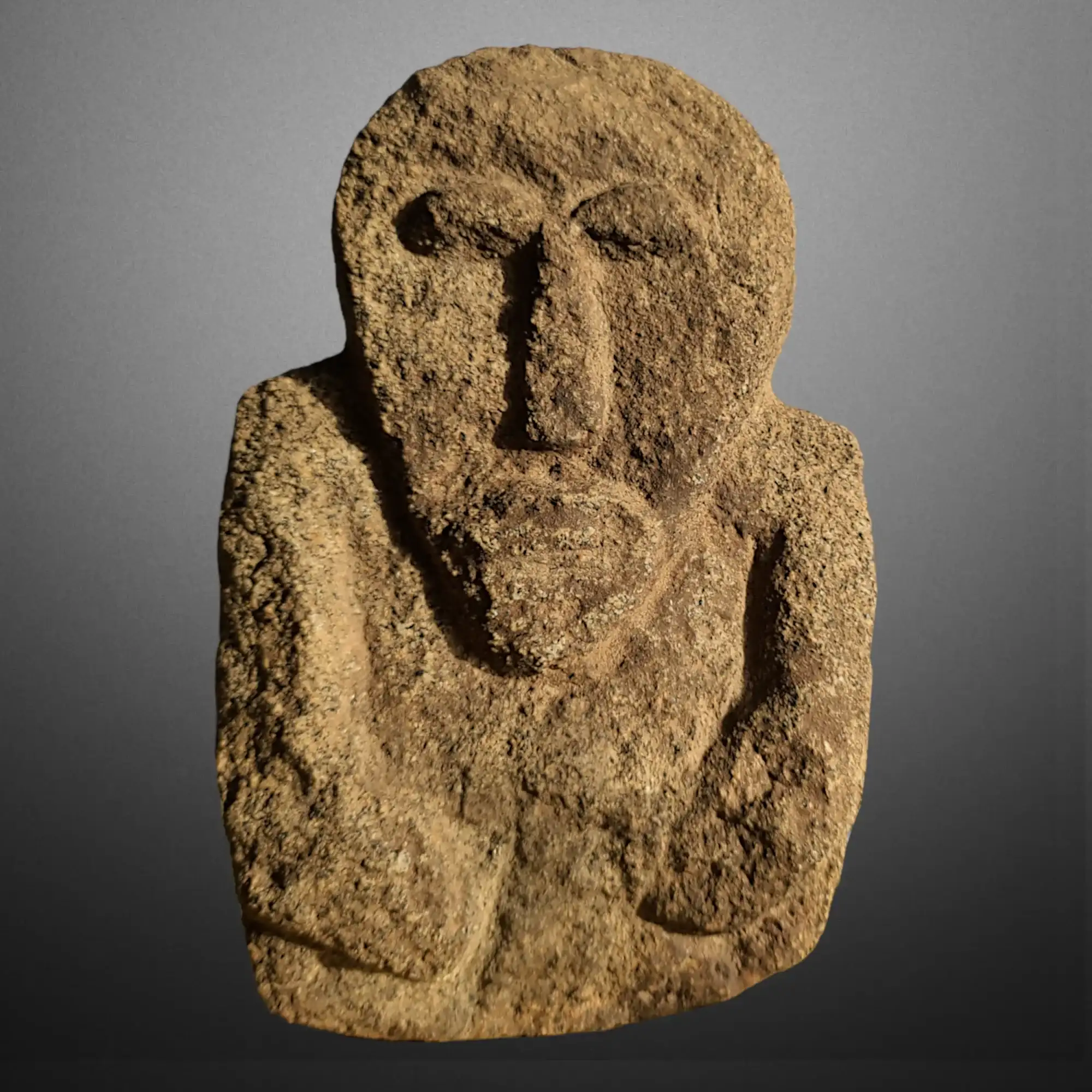Back to the artwork ref.271
Switch to full screen mode
Exit full screen mode

Origin: Ulster, Ireland.
Medium: Granite
Size: Heights 23 cm and 20 cm
Period: 8th–11th centuries.
Condition: erosion
Ref.271
Very rare granite reliefs depicting frontal busts with prominent eyes, a ridged nose, and arms folded/crossed across the chest. The larger figure holds a heavily eroded cross pattée against the chest. These two votive reliefs illustrate the transition from pre-Christian Celtic culture to the earliest Irish Christian imagery, with a persistence of Iron Age stylistic habits. Despite slight differences, both figures share features typical of early Insular art: an oversized head set directly on the shoulders without a distinct neck, and bulging/salient eyes—recurrent markers in the anthropomorphic repertoire of this period.
The style is best known in Ulster on reliefs or stelae during this transitional, syncretic phase of Irish art. The type of granite used supports the proposed geographical attribution. Examination of the stone shows arenization and microfissures consistent with long-term aging. Comparable works in Ulster include: the figures of White Island (Fermanagh), dated 9th–10th c.; the stelae of Boa Island (Fermanagh), dated 8th–10th c. (formerly sometimes assigned to the Iron Age); the pillars of Carndonagh (Donegal), dated 9th–10th c.; and the Crucifixion slab of Inishkea North (Mayo), dated 8th–9th c.
Study & report on request.
References:
· CRSBI – Corpus of Romanesque Sculpture in Britain & Ireland.
· The High Crosses of Ireland - Elinor D. U. Powell - 2008.
· National Monuments Service (Ireland). Records on White Island / Inishkea North.